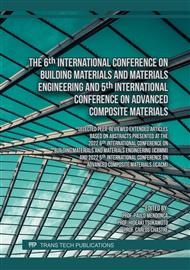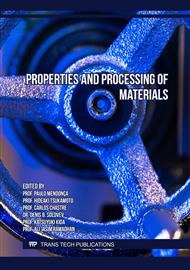p.105
p.111
p.117
p.125
p.131
p.139
p.145
p.151
p.157
Basic Study on the Effect of Water Sprinkling Curing Immediately after Demolding on the Initial Strength of Steam Cured Mortars
Abstract:
Steam curing is generally applied to improve productivity of precast concrete products. After steam curing, the products are stored outdoors as a secondary curing process until shipment. However, drying shrinkage and expansion of microcracks that occur during steam curing may inhibit strength improvement. On the other hand, water curing is also clearly effective as a secondary curing process. However, installing a water curing pool in a precast concrete plant is not easy due to limited space. Therefore, we focused on water sprinkling curing, which is relatively easy to perform without such restrictions. In this study, the effects of water sprinkling curing on the physical properties of mortar at the early age of steam curing were studied from the aspects of materials, mix proportions, curing conditions, and temperature of water used for sprinkling curing. As a result, it was confirmed that water sprinkling curing at an early age after demolding resulted in a rapid decrease in the temperature of the mortar surface layer. However, it was confirmed that the same conditions were effective in increasing compressive strength.
Info:
Periodical:
Pages:
131-137
Citation:
Online since:
April 2023
Authors:
Price:
Сopyright:
© 2023 Trans Tech Publications Ltd. All Rights Reserved
Share:
Citation:



